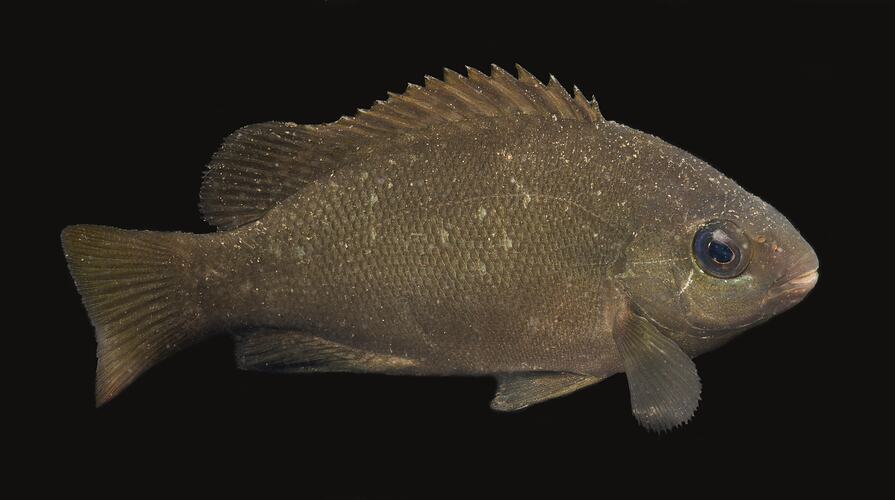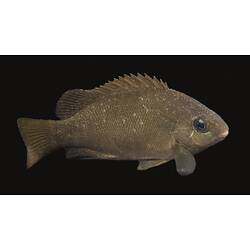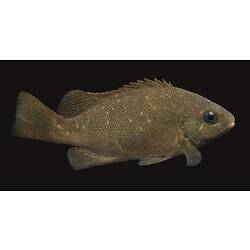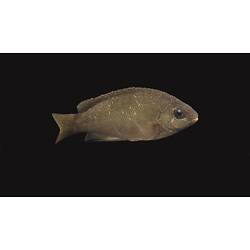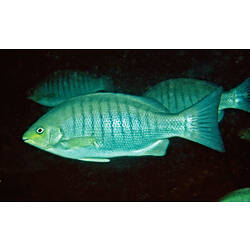General Description
Body is deep, oval and compressed (narrow from side to side). The upper and lower parts are evenly arched. The head is short with a small mouth, eyes and scales. Body is silvery grey, darker above, with 8-12 narrow (often faint) vertical bars on back and sides. Body up to 70 cm.
Biology
A popular angling fish, often in large schools around jetties and rocky outcrops. Feeds on algae and seagrass, and sometimes on invertebrates including crustaceans, molluscs and polychaete worms. Spawning occurs offshore.
Distribution
Eastern and south-eastern Australia.
Habitat
In shallow bays, estuaries and along the coast, around reefs and beneath jetties, in depths of 0-20 m; juveniles in seagrass beds.
More Information
-
Animal Type
-
Animal SubType
-
Brief Id
Grey-brown oval fish with silver belly and vertical bars on its side.
-
Colours
Grey, Brown
-
Maximum Size
70 cm
-
Habitats
-
Diet
Omnivore
-
Diet Categories
Algae, seagrass, Invertebrates
-
Endemicity
-
Commercial
Yes
-
Conservation Statuses
DSE Advisory List: Not listed, EPBC Act 1999: Not listed, IUCN Red List: Not listed
-
Depths
Shore (0-1 m)
-
Water Column Locations
On or near seafloor, Midwater
-
Taxon Name
-
Scientific Author
(Quoy & Gaimard, 1824)
-
Common Name
Luderick
-
Kingdom
-
Phylum
-
Subphylum
-
Superclass
-
Class
-
Order
-
Family
-
Genus
-
Species Name
tricuspidata
